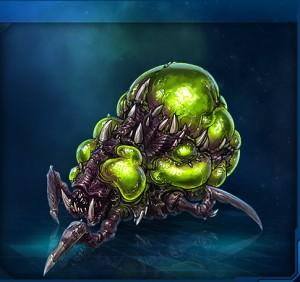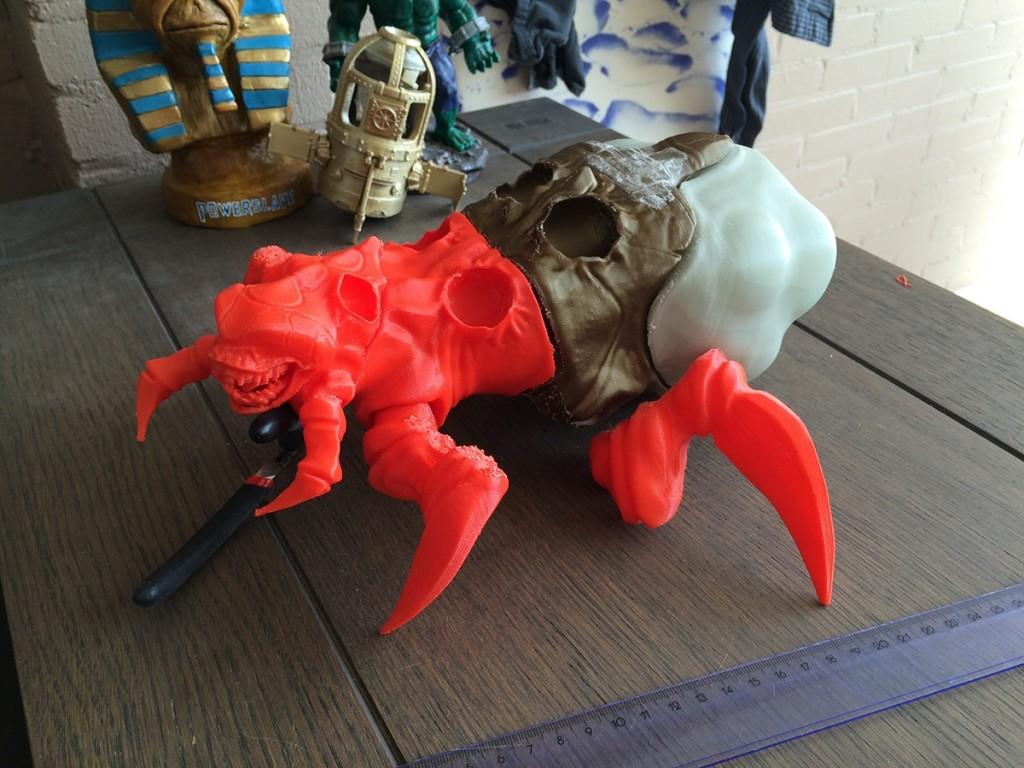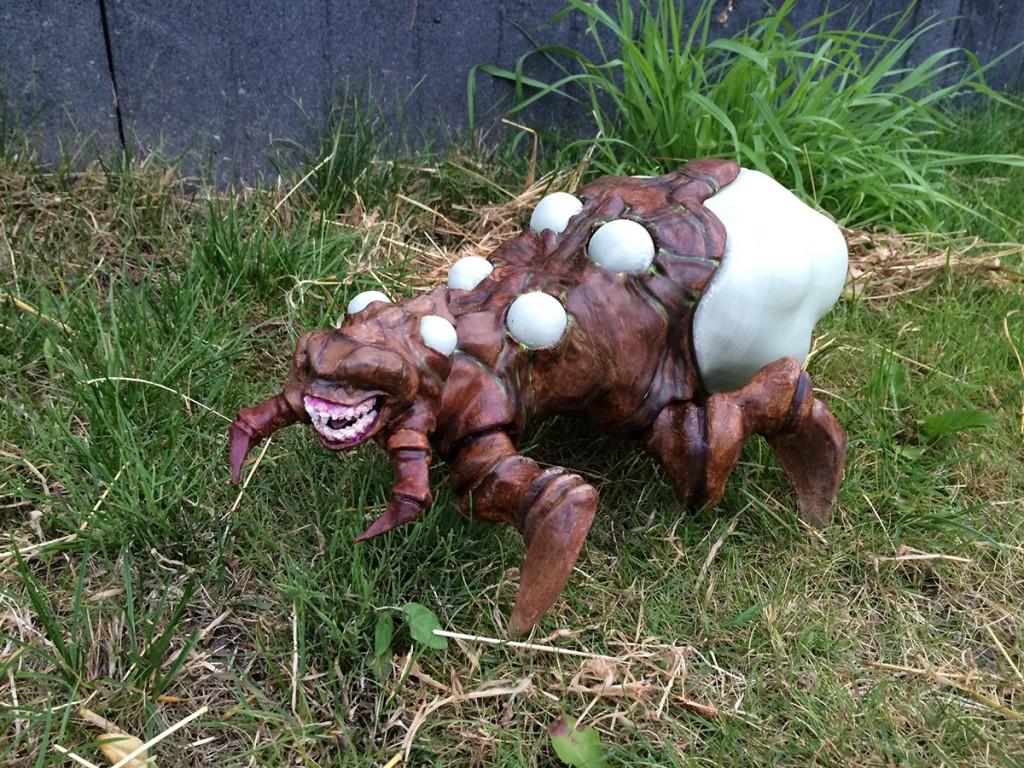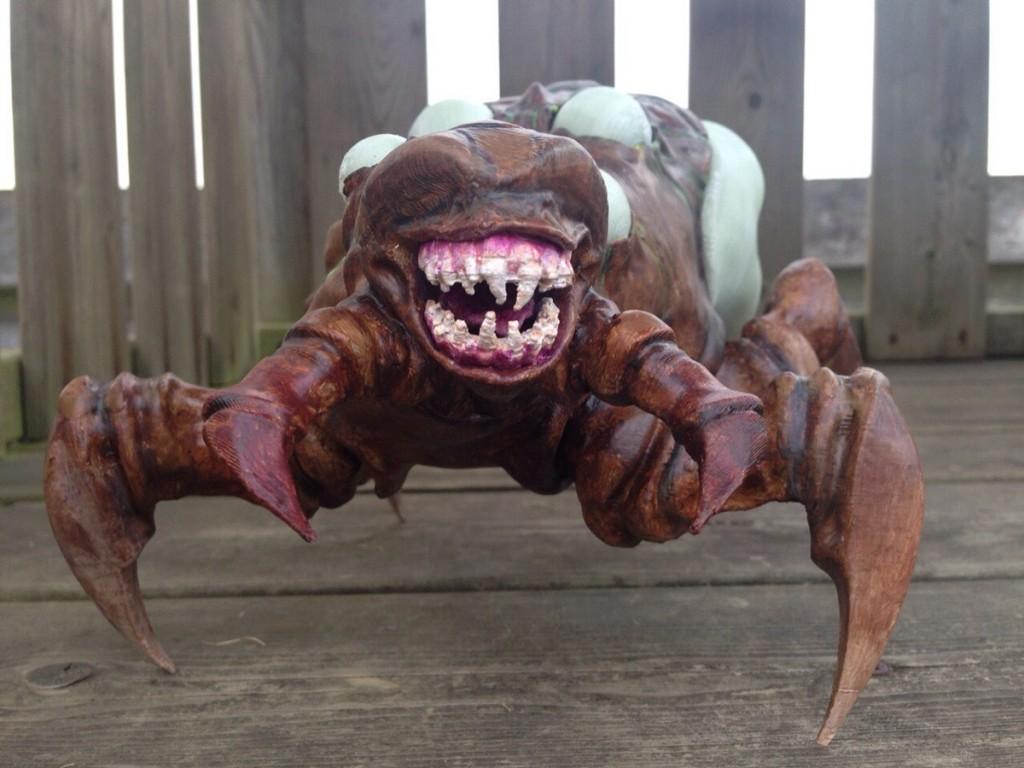Andy de Bruin of Zeeland, Netherlands is a mostly self-taught graphic artist who found a way to combine his passions for 3D modeling and printing with his love of role-playing games (RPGs), designing and creating his own 3D printed versions of characters and objects from RPGs as well as comics and other sources. It was a favorite RPG, StarCraft II: Wings of Liberty, that inspired de Bruin’s most recent 3D modeling and printing project, a nasty-looking creature called a baneling. He posted photos and a brief blog on the project on the creative portfolio site Behance.
StarCraft II, like its predecessor, is a military science fiction, real-time strategy video game. The award-winning StarCraft from Blizzard Entertainment was released in 1998 and became enormously popular and its sequel is faring well. The game and its sequel revolve around three species of sentient beings: the Terrans, which are human exiles from Earth; the Zerg, a super-species of “assimilated life forms”; and the Protoss, a highly advanced, super-species with remarkable mental powers.
That menacing-looking arachnid, the baneling? In the world of StarCraft, a baneling is created from a zergling. Of course! But wait! What’s a zergling? Evidently it’s the most common zerg warrior and a kind of mutation whose larvae get their genetic coding from the primordial ooze. A zergling is about the size of a large dog. Banelings are created from zerglings after a brief chrysalis stage and the thing transforms to become a carrier of a deadly payload via the nasty, pulsating sacs of acid on the baneling’s back, which are basically fleshy, mutated adrenal glands repurposed to produce and store a highly corrosive acid, a pretty unique and frankly terrifying weapon. Those sharp spikes on the baneling’s feet help him navigate rough terrain. He’s like a living tank, slow-moving but lethal. However, he’s a weapon of which you should not become overly fond as a baneling destroys itself while inflicting tremendous damage on its enemies: when it gets close to a target, it explodes in a shower of searing acid!
De Bruin’s baneling is harmless, sans-acid, but his 3D modeling skills plus his post-printing assembly, sculpting, and painting resulted in a very convincingly sinister-looking, other-worldly creature. He used ZBrush to create the model. Finding a visual reference for the baneling could not have been challenging as there are hundreds available via a quick Google search, including an adorable plush baneling–oh, the irony!
After de Bruin completed a test print, he did calculating to determine what size he wanted the final model to be as he intended to use the building plate of his Cubify 3D printer to “its maximum size.” Since the build volume of his 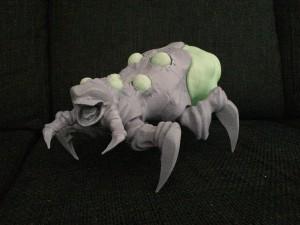 printer is only 14 x 14 x 14 cm, de Bruin ended up slicing the model and “making everything with keys.”
printer is only 14 x 14 x 14 cm, de Bruin ended up slicing the model and “making everything with keys.”
The model is 3D printed in PLA, which resulted in a pretty smooth print, although de Bruin did some clean-up and augmented the material with Alabastine spray filler, which is a kind of filler and primer all in one. He applied multiple layers of the Alabastine filler and, in certain areas, Milliput epoxy putty (smooth it out with your fingers–using gloves, of course–and a little water), sanding between layers until he achieved the surface details he hoped for. The gnarled teeth of the baneling model, while savage looking, are a bit rougher than de Bruin wanted them to be but that was due to the limitations of the 3D printer and too much sanding would likely have broken them off. In truth, it’s an excellent touch, rendering that malignant visage even more baleful.
After priming, sculpting, and sanding, de Bruin used several layers of Royal Talens Amsterdam expert-series acrylic paints, beginning with a base coat of burnt umber. He also used a neon green to simulate the acid pockets of the baneling and–get this–the green glows in the dark, an excellent, added touch.
DeBruin’s instructions are minimal but the photos of his process are excellent and can be seen on his Behance page. He also has a Thingiverse page on which he shares .stl files of other creations.
Subscribe to Our Email Newsletter
Stay up-to-date on all the latest news from the 3D printing industry and receive information and offers from third party vendors.
You May Also Like
Precision at the Microscale: UK Researchers Advance Medical Devices with BMF’s 3D Printing Tech
University of Nottingham researchers are using Boston Micro Fabrication‘s (BMF) 3D printing technology to develop medical devices that improve compatibility with human tissue. Funded by a UK grant, this project...
3D Printing Webinar and Event Roundup: April 21, 2024
It’s another busy week of webinars and events, starting with Hannover Messe in Germany and continuing with Metalcasting Congress, Chinaplas, TechBlick’s Innovation Festival, and more. Stratasys continues its advanced training...
3D Printing Webinar and Event Roundup: March 17, 2024
It’s another busy week of webinars and events, including SALMED 2024 and AM Forum in Berlin. Stratasys continues its in-person training and is offering two webinars, ASTM is holding a...
3D Printed Micro Antenna is 15% Smaller and 6X Lighter
Horizon Microtechnologies has achieved success in creating a high-frequency D-Band horn antenna through micro 3D printing. However, this achievement did not rely solely on 3D printing; it involved a combination...


